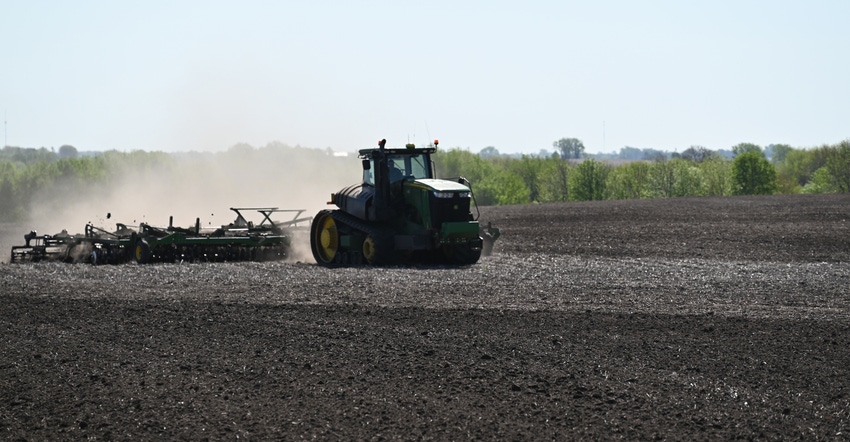January 6, 2023

The 2022 Iowa State University Land Value Survey reported a 17% increase to $11,411 per acre in average Iowa farmland values from November 2021 to November 2022. This surge continues from last year, and the $11,411 per acre nominal land value is the highest ever since the 1940s.
The 2022 nominal land value is 31% higher than the 2013 peak in nominal land values, and the inflation-adjusted value, $9,088 per acre in 2015 dollars, saw a 9% increase and is also the highest on record.
The continuing growth in value is supported by high commodity prices, limited land supply, low interest rates through the summer of 2022, readily available cash and credit, stronger-than-expected crop yields, a good farm economy and strong demand, including from investors.
At the same time, respondents are concerned about higher interest rates and input costs, stock market and economic uncertainty, weather and COVID-19 concerns. In general, survey respondents are still optimistic about the strength of the future land market, with nearly half of respondents forecasting a continued increase in Iowa land values.
Values increase across state
The 2022 Iowa State University Land Value Survey revealed a consistent surging land value pattern across crop reporting districts, counties and land-quality classes. Land values across all nine crop reporting districts saw an increase in land values.
The most significant percentage increases were in the northwest and southwest districts: 22.3% and 22.2%, respectively. The south-central and southeast districts saw the smallest percentage changes and reported increases at or above 10%.
Across land-quality classes, medium-quality land saw the most significant growth, 17.7%, while high- and low-quality land experienced 16.8% and 15.2% increases, respectively.
All 99 counties reported the highest nominal land values since 1950; for 66 counties, the inflation-adjusted values are also record-high — even higher than the previous peak in 2013. The largest percentage increase, 21.6%, was reported in Mills, Fremont, Page and Montgomery counties. Appanoose, Decatur, Lucas and Wayne counties reported the lowest percentage increase, 10%.
Fifty-three percent of respondents reported more sales in 2022 than in 2021, the third-highest rate since Iowa State University began recording this information in 1986.
On the other end of the spectrum, just 16% reported fewer sales, and 31% reported the same level of sales in 2022 relative to 2021. Despite half of the respondents reporting more sales activities, limited land supply is the second-highest factor selected.
Most farmland sales, 68%, were to existing farmers, of which existing local farmers capture 66% of land sales. Only 2% of sales were to existing relocating farmers. Investors represented 27% of land sales, roughly split between local and nonlocal investors. New farmers represented 4% of sales, and other purchasers made up 1% of sales.
The farmland value estimates from the ISU survey are average for all farmland in a county, including cropland, pasture, Conservation Reserve Program land and timberland. Specifically, ISU asked respondents to estimate “farmland value for average-sized farms in your county as of Nov. 1, 2022.”
The Iowa State Land Value Survey is intended to provide information on general land value trends and factors influencing the Iowa land market; it is not intended to provide a direct estimate for any particular piece of property. ISU recommends interested buyers or sellers hire an appraiser to conduct a formal appraisal of a particular parcel, go to county assessor websites, or examine recent auction results for comparable parcels in their region.
More details on the survey can be found on the CARD website (Center for Agricultural and Rural Development), and historical data can be found by visiting Historical Farmland Values.
About the survey
The Iowa State University Land Value Survey was initiated in 1941 and is sponsored annually by ISU. Only the state and district averages are based directly on ISU survey data. County estimates are derived using a procedure that combines ISU survey results with data from the U.S. Census of Agriculture. Since 2014, the survey has been conducted by the Center for Agricultural and Rural Development in the Department of Economics at ISU and ISU Extension and Outreach.
See the 2022 Iowa State University Land Value Survey.
The survey is intended to provide information on general land value trends, geographical land price relationships, and factors influencing the Iowa land market. The survey is not intended to provide a direct estimate for any property.
The survey is an expert opinion survey based on reports by licensed real estate brokers, farm managers, appraisers, agricultural lenders, county assessors and selected individuals considered to be knowledgeable about land market conditions. Respondents were asked to report for more than one county if they were knowledgeable about the land markets. The 2022 Iowa State University Land Value Survey is based on 668 usable county-level land value estimates provided by 443 agricultural professionals.
Zhang is an ISU Extension economist.
You May Also Like




